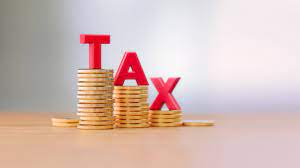The effect of firm size and gender diversity on tax avoidance: case study on health companies listed on BEI in 2018-2022
DOI:
https://doi.org/10.31943/gw.v14i3.580Keywords:
penghindaran pajak, firm size, gender diversityAbstract
Abstract
Tax avoidance is an effort by companies to avoid taxes by not violating applicable laws. This study aims to determine the effect of firm size and gender diversity on tax avoidance. Purposive sampling is a data collection technique used in this study and the method used is a quantitative method. The data used in this study is secondary data derved from IDX The population selected and meeting the criteria for the study was composed of 13 companies. The data analysis used was multiple linear regression using SPSS 25. The results of the test stated that firm size negatively affects tux avoidance, and GD1 and GD2 negatively affects tax avoidance.
Keywords: Firm Size, Gender Diversity and Tax Avoidance
Abstrak
Tax Avoidance atau penghindaran pajak merupakan upaya perusahaan dalam mengindari pajak namun dengan tidak melanggar undang-undang yang berlaku. Penelitian ini bertujuan untuk mengetahui pengaruh Firm Size dan Gender Diversity terhadap penghindaran pajak. Purposive Sampling merupakan teknik pengumpulan data yang digunakan dalam penelitian ini dan metode yang digunakan adalah metode kuantitatif Data yang digunakan dalam penelitian ini merupakan data sekunder yang berasal dan IDX. Populasi yang dipilih dan yang memenuhi kriteria untuk penelitian ini adalah 13 perusahaan. Analisis data yang digunakan adalah regresi linear berganda dengan menggunakan SPSS 25. Hasil dari pengujian tersebut menyatakan baliwa Firm Size berpengaruh negatif terhadap Tax Avoidance dan GD1 dan GD2 berpengaruh negatif terhadap Tax Avoidance.
Keywords: Firm Size (Ukuran Perusahaan) Gender Diversity dan Tax Avoidance ( Penghindaran Pajak)
Downloads

Downloads
Published
How to Cite
Issue
Section
License
Copyright (c) 2023 Devi Leony Caroline Sitohang Sitohang, Valentine Siagian

This work is licensed under a Creative Commons Attribution 4.0 International License.
The use of non-commercial articles will be governed by the Creative Commons Attribution license as currently approved at http://creativecommons.org/licenses/by/4.0/. This license allows users to (1) Share (copy and redistribute the material in any medium) or format; (2) Adapt (remix, transform, and build upon the material), for any purpose, even commercially.









